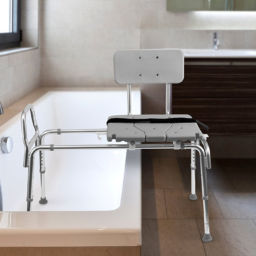How to Use Your BMI to Define Obesity
This is an unpleasant area for many of us as it calls out your body size/weight in order to determine how to medically classify you for treatment and products. It is particularly damaging to your psyche to be called out and labelled “obese” because your body weight is not “within the clinically established normal range”. In fact the medical profession has come up with even more demeaning classifications when you fall into this “obese” or “fat” range as you will see below. There is much to be written and expressed about the feelings and the damaging consequences of assigning people to these categories, but we will save that topic for another post.
Today we will focus on how clinicians classify patient care and products around a weight scale. In particular we will be looking at those who fall above the defined “healthy weight” category. For clinical purposes it may not matter whether you are naturally a heavier weight, you have found yourself in an unhealthy weight situation through poor eating choices or perhaps from a crippling medical condition, such as my wife with severe Lipedema and Lymphedema. No matter how you arrived at this point, you may have found it difficult to perform some of the daily tasks that once you performed with relative ease.
The kinds of products available to help in these daily tasks is first determined by clinically establishing your weight classification. Clinicians use your BMI (body mass index) to measure where you fit on the size charts (shown below). Regardless where you rank on the weight charts Hall of Care has products to fit your needs. Whether you are fine with your body size and shape, are on a journey back to a healthy state or are faced with a long-term medical condition, Hall of Care can help you find products and services to make life a little easier! Let’s look at how clinicians use your BMI to define obesity.
Calculating your BMI
Clinicians use BMI levels to determine if someone is within the established normal weight category or fall into one of the defined obese categories. Your BMI is calculated by using a person’s weight in kilograms (kg) divided by the square of their height in meters (m). This can be confusing to calculate, especially converting one’s weight and height in metric numbers. Fortunately, there are several calculators that can give you your BMI by entering either metric or American measurements, such as found at the National Institute of Health.
You can also use this BMI calculator supplied by BMI Calculator USA:
Once you calculate your BMI you can determine your weight classification by using the following table:

Defining Obesity
You might ask yourself “I know I am a plus sized person (that’s the terminology my wife uses) so why is it important to know my weight category?” Well, that is good question with many answers. First and foremost the health care organizations, such as World Health Organization, the Centers for Disease Control and National Institutes of health track the changes in health status of the population to determine in which direction the general health of the population is headed. I’m sure everyone has heard the American population is getting larger each year, which sparks a health concern at national and global levels.
 A CNBC report recently published that 38 percent of the population are considered obese with rising expectations at 44 percent by year 2030. Currently 5 percent of men and 10 percent of women are considering morbidly obese, having a BMI higher than 40. This is a health epidemic that health organizations are trying to wrestle with in order to lower the risk of weight associated diseases (heart disease, diabetes, some cancers, arthritis and Alzheimer’s disease).
A CNBC report recently published that 38 percent of the population are considered obese with rising expectations at 44 percent by year 2030. Currently 5 percent of men and 10 percent of women are considering morbidly obese, having a BMI higher than 40. This is a health epidemic that health organizations are trying to wrestle with in order to lower the risk of weight associated diseases (heart disease, diabetes, some cancers, arthritis and Alzheimer’s disease).
Along with the alarming increase in obesity in adults a second study found 17 percent of children and teens are obese and 5.8 percent were extremely obese. There is no size chart for children such as with adults. Clinicians compare weights to other children of same age and height and those higher than 95 percent of their class are considered obese.
Secondly, anyone considering a surgical solution to an obesity situation will be evaluated by their BMI level. Surgical and recovery risks significantly increase as you move from one weight category to the next. Larger healthcare organizations usually have a special department to handle the obese population and their medical needs. They have a bariatric department that deals with the causes, treatment and prevention of obesity.
Why is this important to me?
The growing population of obese (or plus size) people is necessitating the augmentation of products and services to meet the demands of the heavier and larger person. However, sometimes it can be difficult to find these essential products as they are not widely advertised. This can be very frustrating as it can mean the difference of being able to perform a task or not. It may also mean the difference between mobility and being bedridden.
How does Hall of Care help?
Hall of Care is scouring the Internet for manufacturers and vendors that provide a variety of products to accommodate the bariatric (plus size) population, which may or may not be disabled. We know what it is like to lose critical capabilities. It not only affects your physical abilities but your mental state too. People become frustrated, angry and depressed trying to cope with the diminishing loss of functionality and independence.
Families frequently cannot  empathize and do not know how to help or where to turn for assistance. Of course your first line of assistance should be your health professional and insurance company or durable medical equipment (DME) department. After that Hall of Care is here to help!
empathize and do not know how to help or where to turn for assistance. Of course your first line of assistance should be your health professional and insurance company or durable medical equipment (DME) department. After that Hall of Care is here to help!
We help to identify those products that will assist in accomplishing a diminished or lost function, such as bathing yourself or creating stability in walking. Those products need to be safe and solidly built to accommodate the larger person. Remember a “bariatric” product made for a 300 pound person will probably not be suitable for a 400 or 500 pound person. It is imperative you read the product descriptions to make sure a product will work for your situation and size! We attempt to easily identify this type of information so you can quickly find a product suitable for you.
Whether you 50, 100 or 300 pounds overweight, suffering from a debilitating condition or not, we are here to help you solve your daily challenges and regain that lost functionality and independence!
To your improved health…

![How to Choose the Best Bath Chair or Transfer Bench [Buying Guide]](https://hallofcare.com/wp-content/uploads/2019/04/Gartner_Bath_Bench-256x256.jpg)



